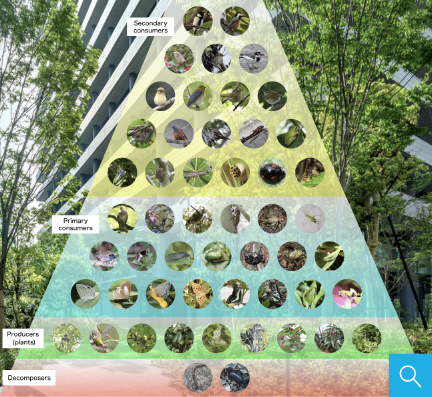Sustainability is one of the Daibiru Group’s most important missions.
The “Group Code of Conduct”was formulated with this in mind. The Daibiru Group will focus on the corporate principles and comply with the “Group Code of Conduct” in its corporate activities while at the same time making the utmost efforts to achieve sustainable growth in harmony with society.
Furthermore, conforms to “Environmental Policy of the Group” the Daibiru Group works with all its stakeholders, including customers, local communities, and business partners, to ensure that its activities compliment and harmonize with the natural environment.
Since its establishment in 1923, the Company has focused on building constructions which emphasize coexistence with nature such as rooftop greenery, reduction of the environmental impact by existing buildings, and coexistence with the local community. We will continue to promote initiatives for sustainability and to contribute to achieving a sustainable society through its business activities.

To grow alongside society and assess the range of issues facing it from a business perspective, we have identified as material a series of priority issues (materiality) in the short, medium, and long term that are either business opportunities or risks.
Ⅰ.Providing value to society (or reducing damage to social capital)< Materiality >
① Provide optimal offices for changing times
② Be rooted in the community and develop alongside towns
③ Provide eco-friendly buildings to the next generation
Ⅱ.Strengthening the foundation for providing value
① Increase human resource and organizational strength
② Accumulate intellectual capital to form the basis for high-quality services
③ Collaborate with stakeholders to create value
④ Evolve toward corporate governance that supports sustainable improvement of corporate value
※Group materiality comprises two categories: (I) providing value to society (or reducing damage to social capital) and (II) strengthening the foundation for providing value. The three materialities within category I correspond roughly to our corporate principles,
“constructing buildings, creating towns, pioneering the new area,” in that the first materiality concerns office buildings, the second
concerns local communities, and the third involves consideration for the environment.

Daibiru has set key performance indicators (KPIs) in fiscal 2022, based on the materiality identified in fiscal 2021, to effectively seize opportunities and resolve issues. In principle, the scope of these KPIs has been limited to the Daibiru Corporation (non-consolidated) and its buildings within Japan, taking into account feasibility, both in terms of effective implementation and dissemination within the Company, and other factors.
However, we will continue to discuss expanding the scope of these KPIs to cover the entire Group and its overseas properties as well as formulating qualitative and concrete targets, and action plans to reach the targets. In doing so, we aim to achieve sustainable growth for the Group.
(1)Provide optimal offices for changing times
(2)Be rooted in the community and develop alongside towns
(3)Provide eco-friendly buildings to the next generation
(1)Increase human resource and organizational strength
(2)Accumulate intellectual capital to form the basis for high-quality services
(3)Collaborate with stakeholders to create value
(4)Evolve toward corporate governance that supports sustainable improvement of corporate value
*1 Refers to when the bottom portion of a window can be opened or closed for ventilation
*2 Number of buildings constructed as part of projects launched jointly with other companies
As part of the joint development of Nakanoshima 3-chome in Osaka, conducted through a joint venture, Nakanoshima Shiki-no-Oka garden has been linked by a pedestrian bridge to the promenade beside the Dojima River, which runs past the site’s northern side. The bridge also connects to the Nakanoshima Museum of Art, Osaka, which opened in Nakanoshima 4-chome, on the site’s western side. The bridge is expected to increase foot traffic in the Nakanoshima district, and will contribute to the enhancement of pedestrian
safety by separating walking areas from those used by cars.
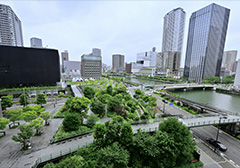
In order to provide office buildings where people can work with peace of mind, we conduct annual disaster prevention drills at our buildings. With the aim of improving tenants’ knowledge of disaster prevention, the drills include confirming evacuation routes, as well as exercises conducted at spaces such as on the roof of the building where employees can experience a smoke-filled environment and practice using fire extinguishers with the cooperation of the fire department in charge.
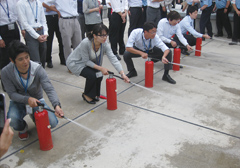
Since 2013, we have been carrying out the Nakanoshima West Water Sprinkling Project in Nakanoshima area in Osaka together
with local companies. This project involves sprinkling water on streets to create a cool sensation in summer which has been a long-standing Japanese wisdom for curbing the heat island effect.
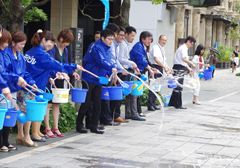
Since 2012, we have been involved in litter cleanup activities along walkways and the surrounding area from the Oebashi to the Tamaebashi which cross the Dojimagawa together with local companies in Nakanoshima area in Osaka.
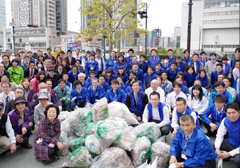
We have been cooperating in disaster response training concerning stranded persons together with companies and groups in the Akihabara Station area every year since 2010 with the purpose of providing a support system to those who find it difficult to get home after an occurrence of a major disaster.
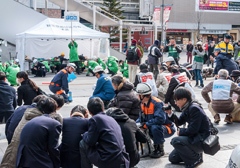
AED machines are provided in major buildings to be easily accessible by tenants and visitors. In addition, Group employees take courses on how to use the AED machines and emergency life-saving techniques.
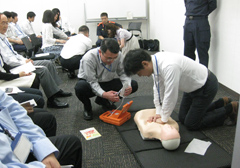
The Osaka Classic is a classical music festival which started in 2006. The main venues for the concerts include parts of office buildings and cafes so even those who are not familiar with classical music can enjoy it. Daibiru has provided spaces with an atrium as stages in our Nakanoshima Daibiru Building, the Daibiru-Honkan Building and the Shin-Daibiru Building to a number of different orchestras including the Osaka PhilHarmonic Orchestra since September 2009, as a way to contribute to local cultural activities.
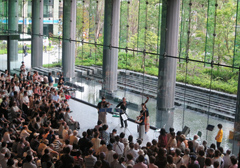
In March 2015, we made contributions to the city of Osaka by making improvements to Dojima Park on the south side of Shin-Daibiru Building together with its construction. The land for Dojima Park was originally a park with green area which we created and donated to the city of Osaka in 1959. After this park was cleared away to make room for an expressway, it was reconstructed in 1977.
However, the park became dilapidated so it went under renovations after consultation with the city of Osaka and the local community.
The latest improvements to this park include measures against illegal parking and increased lighting along with improvements of pavement and greenery to create a bright and clean park.
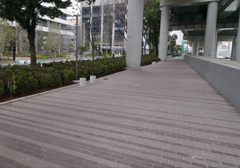
We participate in the Living Architecture Museum Festival Osaka(Open House Osaka), which joined Open House Worldwide in 2019, opening buildings to the general public free of charge so that people can experience architecture first-hand. To date,our company has conducted guided tours of the Daibiru-Honkan Building and workshops for children, etc.
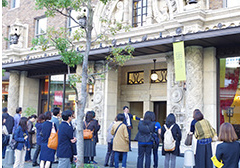
As a sponsor company, we supported the “23rd Osaka YMCA International Charity Run 2017” held in October 2017, with our employees and their families participating in the event as runners.
This event is held with the goal of supporting children with disabilities, and participation fees and contributions to the charity run are used for a support program for disabled children conducted by the YMCA. Daibiru plans to continue sponsoring this event.
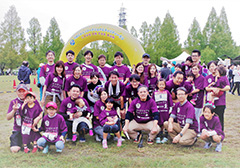
In Vietnam, where our company started business in 2012, we have been carrying out social contribution activities in the hope that we develop together with city areas by contributing to solving local and social problems.
In 2021, the Company and local subsidiaries in Vietnam donated total 600 million Vietnamese dong (equivalent to approximately 2.9 million yen) to the COVID-19 Vaccine Fund, which was established to import and purchase vaccines and study, develop and implement infection control measures against COVID-19. We also implement other initiatives including charity events to support orphans and homeless people living in institutions.
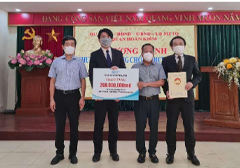
Donation Ceremony with Hanoi Hoan Kiem Fatherland Front, one of contacts for donations to the COVID-19 Vaccine Fund

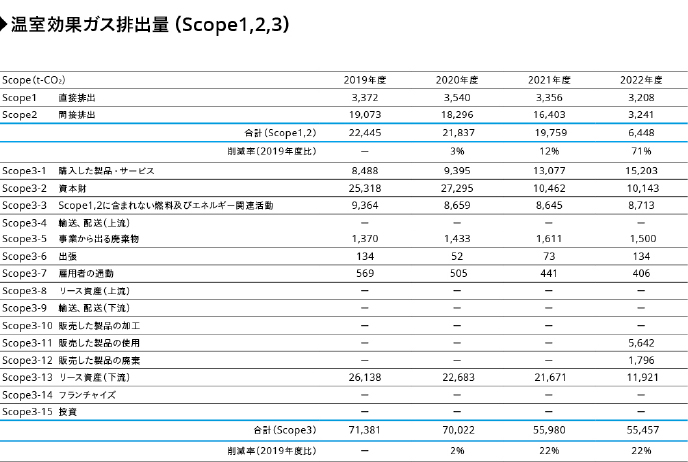
“Shin-Daibiru Building Dojima-no-mori” inherits the spirit of the former Shin-Daibiru Building rooftop tree garden and with the concept of “a forest that is good for not only people but also other living things” we have replanted some of the trees planted in the former building’s “rooftop tree garden,” including Japanese zelkovas and maples that are around 50 years old, and in addition we use primarily indigenous varieties of trees to create a green space of approximately 1,000 tsubo, the same as in the former building. Due to these initiatives, we became the first in West Japan to acquire AAA evaluation, the highest rank, in JHEP Certification which evaluates contributions to the ecosystem.
Acquired AAA, the highest rank in the JHEP Certification / Acquired 2014 Five Stars, the highest rank in the DBJ Green Building Certification/Acquired S, the highest rank in CASBEE Osaka Mirai (Osaka City Comprehensive Assessment System for Built Environment Efficiency)/Received the Nikkei Inc Prize, Rooftop Greening Section of the 15th Competition for Specialized Greening Technology for Rooftops, Wall Facings and New Green Spaces/Received the Organization for Landscape and Urban Green Infrastructure Chairman’s Award, Green Business Activities Category at the 36th Green City Awards/Received the Governor of Osaka Award, Landscape Design Category at the 6th Green Town Planning Award (Osaka Landscape Award)”/Received the Governor of Osaka Award and the Biodiversity Award in the 10th Osaka Outstanding Greening Award/Certified as a City Oasis under SEGES (Social and Environmental Green Evaluation System)
Note that an external organization carried out an organism monitoring study in FY 2016 and FY 2020 after the completion of “Shin-Daibiru Building Dojima-no-Mori“, to specifically ascertain the contribution to the ecosystem and the results confirmed that a food chain had been established to some extent in Dojima-no-mori. For birds and insects, this kind of habitat environment is valuable in a city, so we were evaluated as having made a large contribution to the ecosystem.
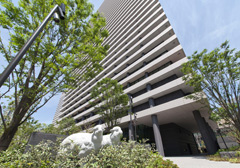
- Study implementation period
-
First period: April 2016 to March 2017
Second period: April 2020 to March 2021 - Species confirmed by the field study
-
Bird species
First period:15 species
Second period:18 species
Confirmed species include the Japanese great tit, brown-eared bulbul, Japanese bush warbler, Asian stubtail,
Oriental turtle dove, and the Japanese white-eye -
Insect species
First period:54 species
Second period:68 species
Confirmed species include the Asian mantis,the blue-tailed forest hawk dragonfly,
and the common bluebottle butterfly - Image of the ecosystem pyramid
- * Image of the ecosystem pyramid of Dojima-no-mori (all of the photos were taken locally)
The CO2 emissions*1, energy use, and their respective intensity (per operating floor area) from Company buildings*2 over the past five fiscal years are shown on the right. Although the operating area and the amount of energy use vary from year to year, intensity is on a downward trend due to initiatives aimed at reducing environmental impact, and the introduction of emissions-free power in December 2021.
[Lower environmental impact of air conditioning]
In addition to the use of low-emissivity (Low-E) glass in windows, we utilize louvers and eaves in buildings equipped with them to shield offices from sunlight, dissipating solar radiation and reducing the need for air conditioning. This system also monitors CO2 concentrations to increase or restrict the cooling effect from outside air during times of the year when temperatures are moderate.
In addition, the Daibiru-Honkan Building, the Nakanoshima Daibiru Building, and the Hibiya Daibiru Building use district heating and cooling systems, and when constructing new buildings or implementing large-scale renovations we use the latest high-efficiency equipment to enhance energy efficiency.
[Examples of Initiatives Related to Lighting]
We are taking active steps to switch to LED lighting, which has a long life and highly efficient energy consumption and is eco-friendly. In addition, when sunlight provides sufficient light during the day, a sensor detects and lowers the brightness of the lights, and a motion sensor detects when no one is present and turns off the lights, to reduce wasteful consumption of electricity. We plan to complete the transition to LED lighting by roughly 2024, with progress at approximately 65% as of March 31, 2022.
[Adoption of Emissions-Free Power]
In April 2022, we completed our transition to emissions-free power*3 at all Company-owned buildings in Japan*4. This energy comprises electricity with Non-Fossil Fuel Certificates (with tracking information)*5 compliant with the RE100 global initiative. Since the introduction of emissions-free power in the buildings should result in zero CO2 emissions from electricity consumed at the offices and stores of the building tenants, it should also enhance their corporate standing from an environmental perspective. An annual total of approximately 67 million kWh*6 of electricity will be replaced with electricity derived from renewable energy sources in 20 target buildings, reducing CO2 emissions by approximately 26,000 tons.*6 This is equivalent to the emissions produced by approximately 14,000 households.
[Introduction of Carbon-Neutral City Gas]
Daibiru has introduced the use of carbon-neutral city gas in some of its buildings. Such gas utilizes LNG for which greenhouse gas emissions associated with the overall life cycle (including production, transport, processing, and end-use) are offset with nature-based credits.
[Participation in Demand Response]
Demand response is a mechanism for maintaining the balance of electricity supply and demand by conserving the use of electricity on the user side, based on requests from power transmission and distribution business operators when supply or demand is tight. Daibiru is participating in demand response at some of its properties by turning off lights and air conditioning in the common areas of participating buildings, to an extent that does not inconvenience tenants.
-
CO₂ emissions
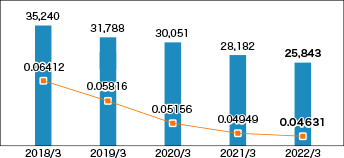
- CO₂ emissions (t-CO₂)
- CO₂ emissions intensity (t-CO₂/m²)
-
Crude Oil Equivalent Energy Use
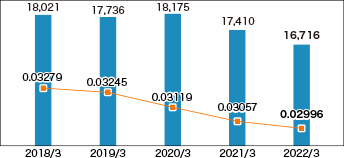
- Crude oil equivalent energy consumption (kl)
- Energy consumption intensity(kl/m²)
On the right of this page show water use and intensity at Company buildings*2 (per operating floor area) over the past five fiscal years. In fiscal 2021, the amount of water use was reduced by about 27% compared to fiscal 2017, and by about 28% in intensity, as a result of fewer people utilizing the buildings due to COVID-19, a continuation of the pattern in fiscal 2020. The Company strives to utilize water resources effectively through efforts such as adopting the latest sanitary fixtures when renovating or constructing new buildings as well as utilizing rainwater for irrigation.
Water use
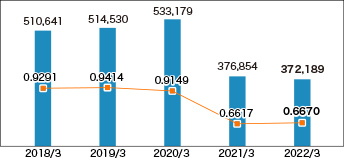
- Water use (m³)
- Water use intensity (m³/m²)
The waste emissions and intensity (per operating floor area) of our properties*7 over the past five fiscal years are on the right. Waste emissions have varied with each fiscal year for reasons that include the acquisition of properties, but intensity is on a downward trend.
[Reduction of waste and proper disposal throughout the life cycle of buildings]
A variety of waste is generated during the construction and demolition of a building. We manage and dispose of harmful substances and substances that pollute the environment in a proper manner and in accordance with laws and regulations. In addition, we collect and reuse concrete waste and chlorofluorocarbons and lithium bromide used in air conditioning equipment. As part of the ongoing reconstruction plan of the Midosuji Daibiru Building, the underground body of the existing building are being used for an earth retaining wall. We strive to reduce waste in the operating stage as well. To do this, and to promote recycling, we have established a system for the sorted collection of waste.
Waste emissions
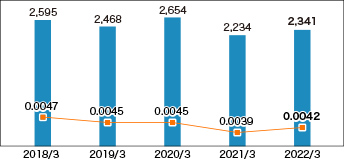
- Waste emissions (t)
- Waste emissions intensity (t/m²)
*1 Calculated using emissions coefficients by energy supplier; therefore, CO2 emissions and emission intensity are impacted by fluctuations in these coefficients.
*2 Scope of data: 27 office and commercial buildings owned by the Company (buildings subject to the Act on the Rational Use of Energy)
*3 Electricity derived from renewable energy sources with net-zero CO2 emissions as proven through non-fossil fuel energy certificates.
*4 Excluding buildings that are scheduled to be rebuilt and for which the Company has not concluded a power purchase contract.
*5 Electricity utilizing non-fossil fuel certificates with tracking information that details where the power was generated
*6 Calculated based on total power consumption of the target buildings for fiscal 2019.
*7 Scope of data: Company-owned office buildings subject to the Act on the Rational Use of Energy and for which calculation is possible
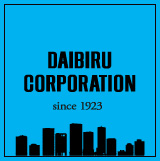
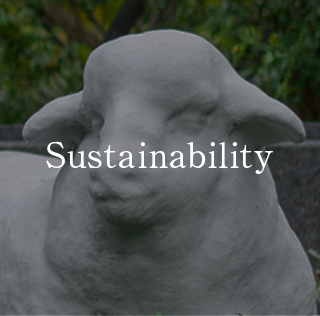








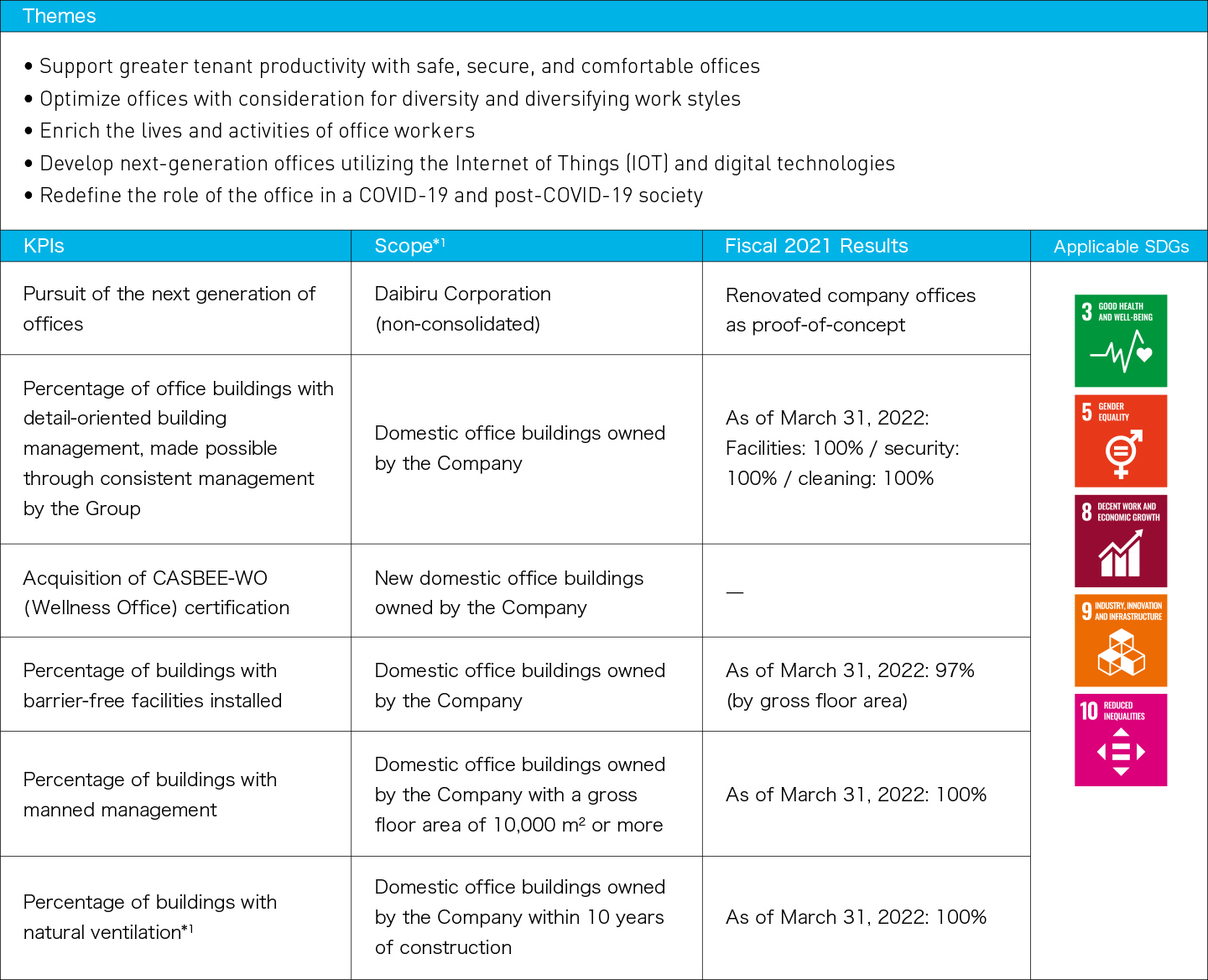
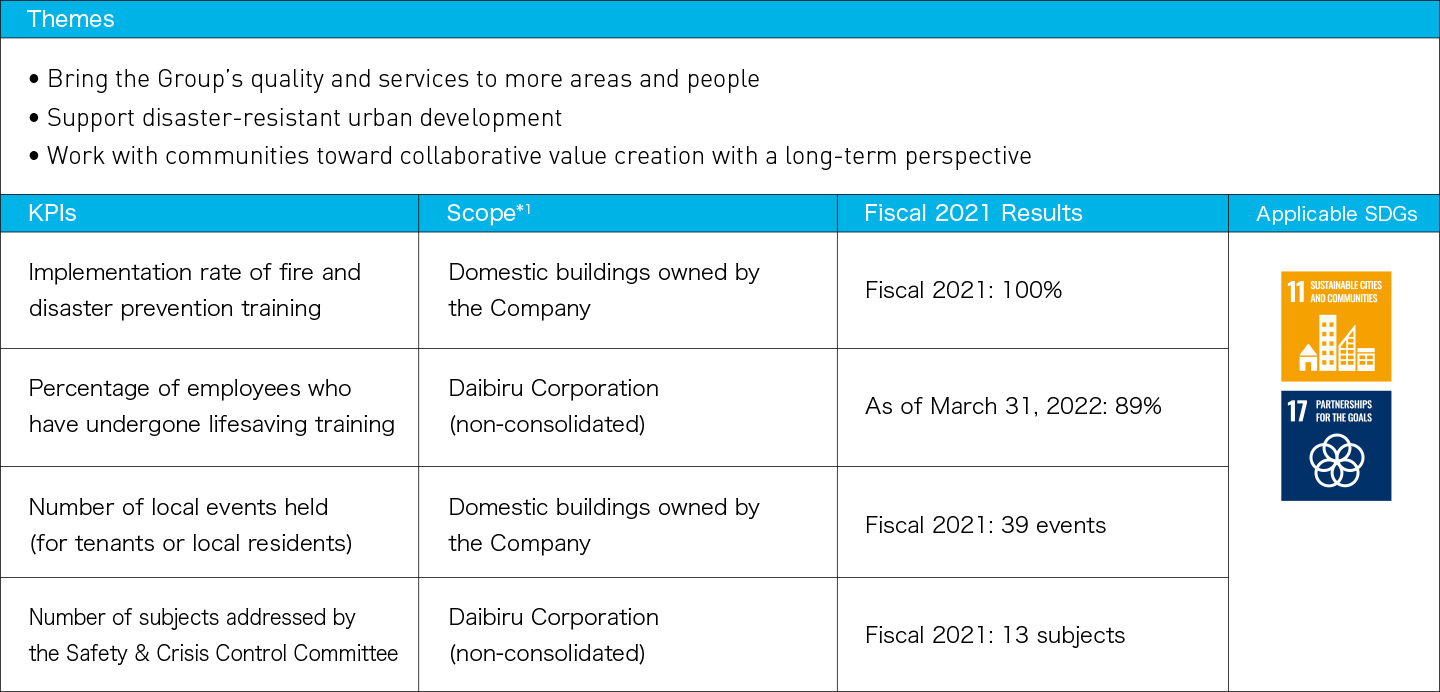
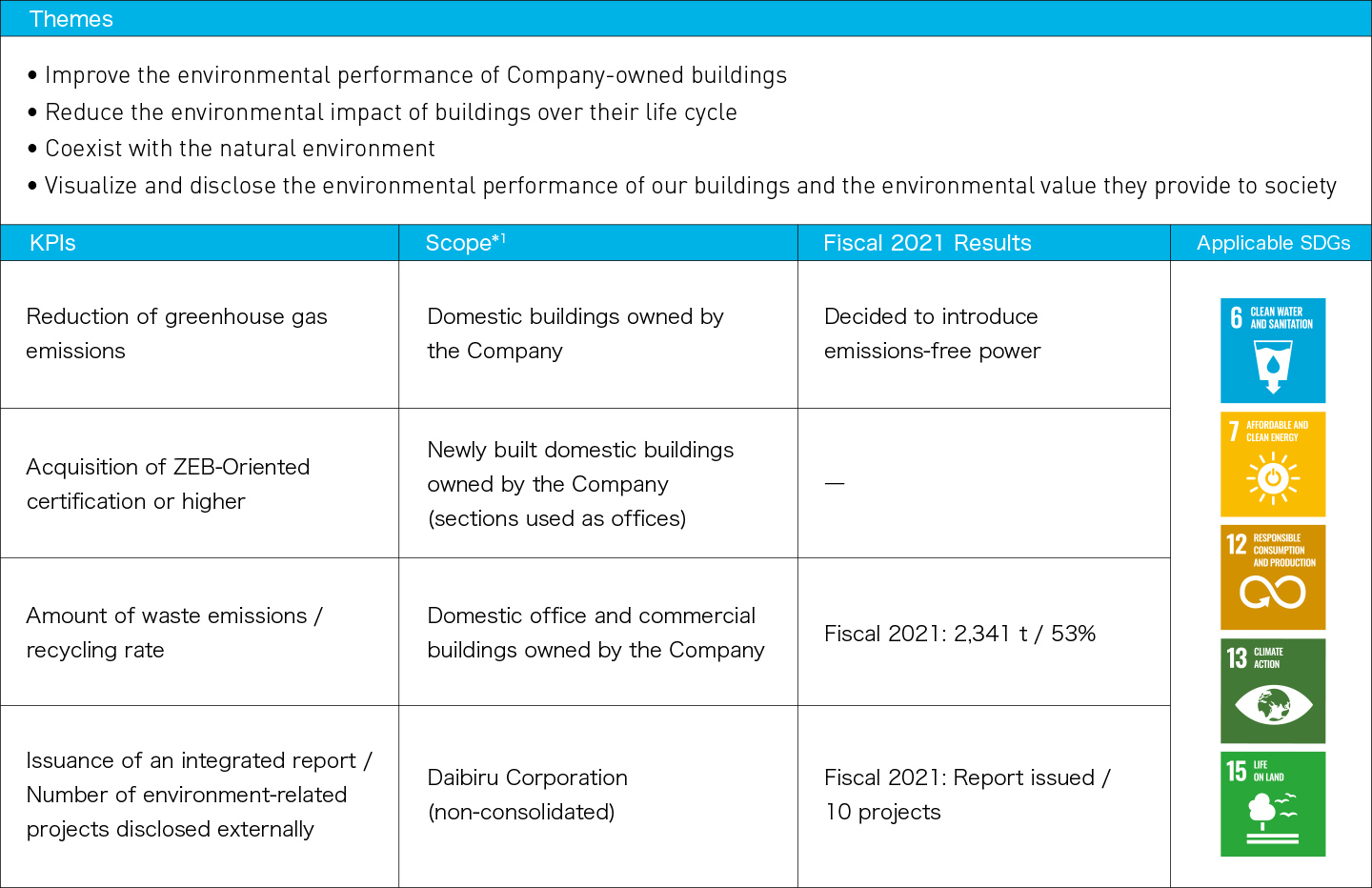

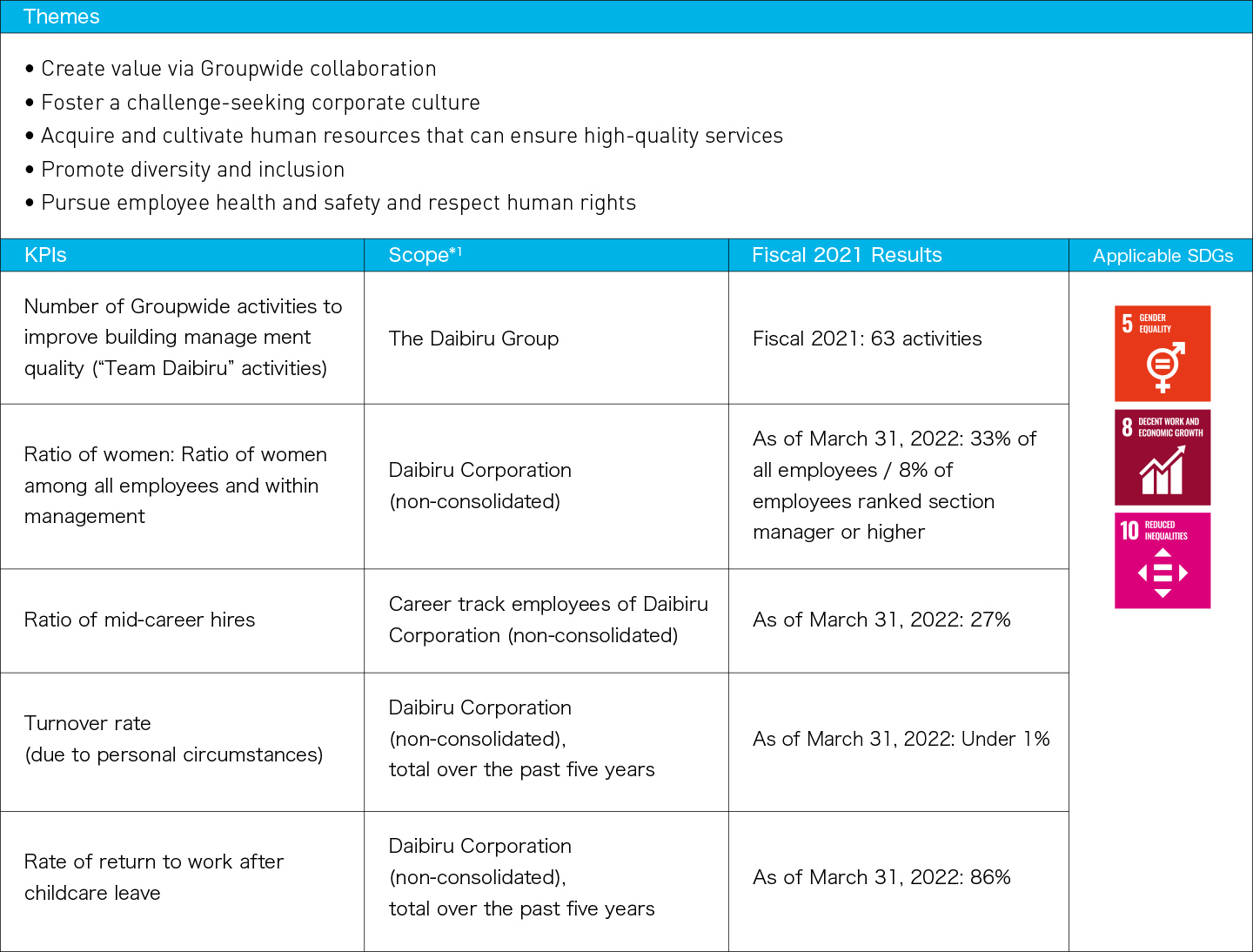
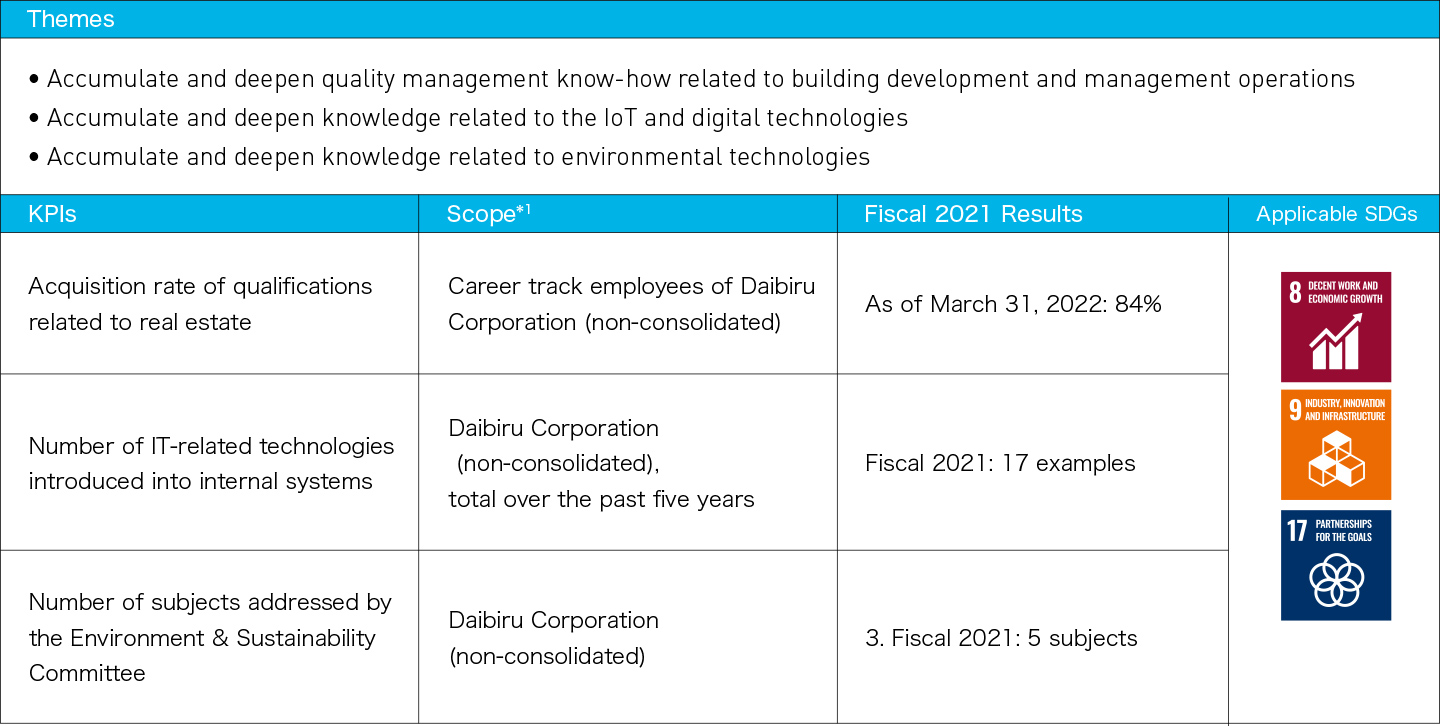
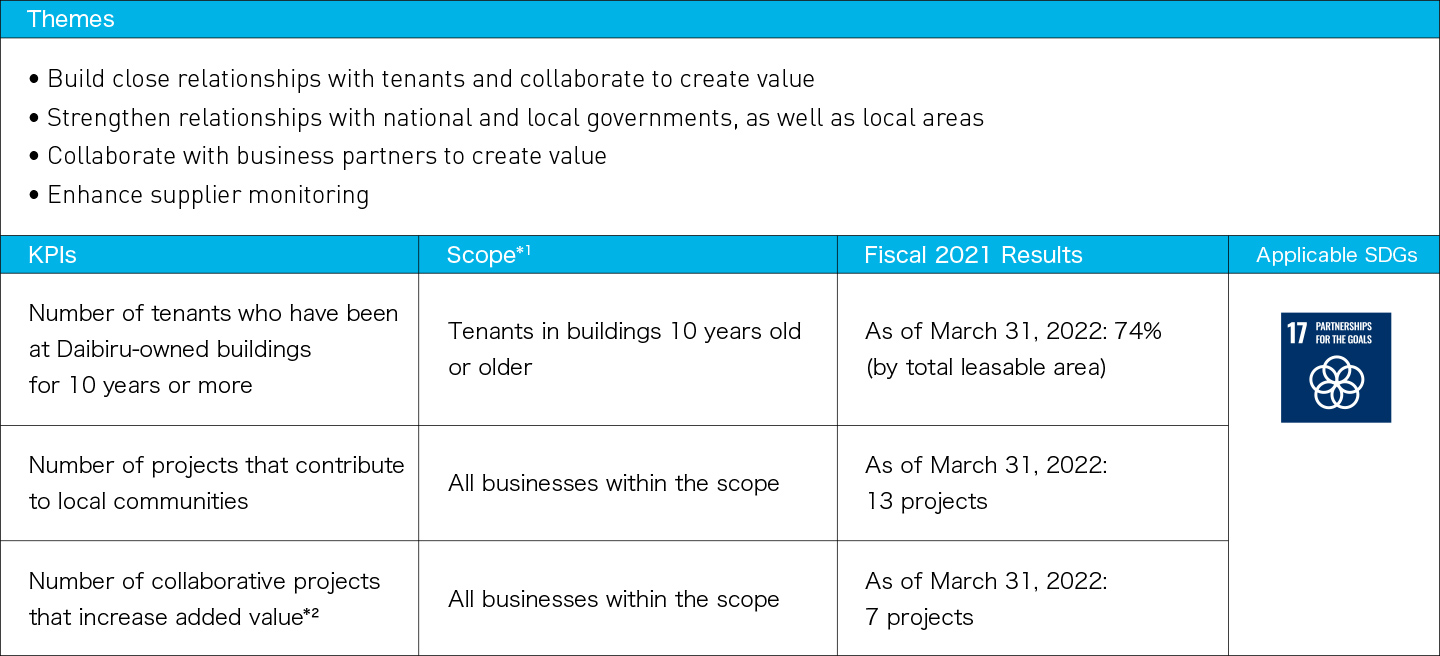
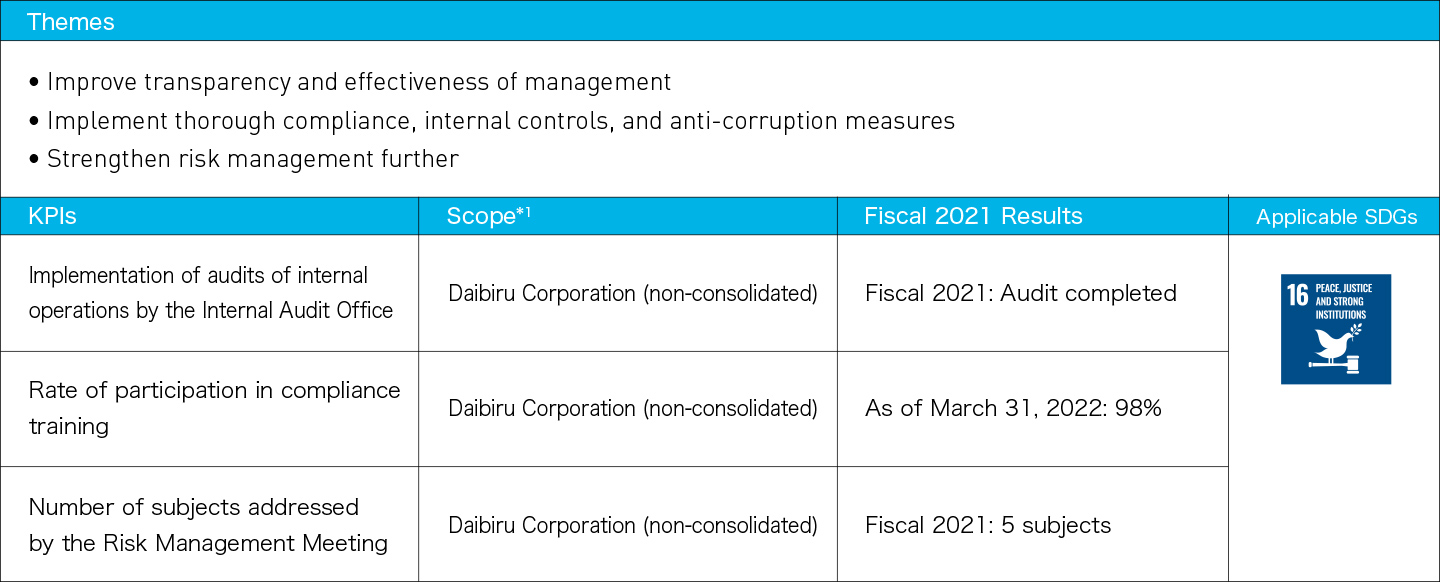


![Disaster Prevention Measures [Disaster Prevention Drills]](/english/common/images/sustainability/sus2_sub_hx02.jpg)













